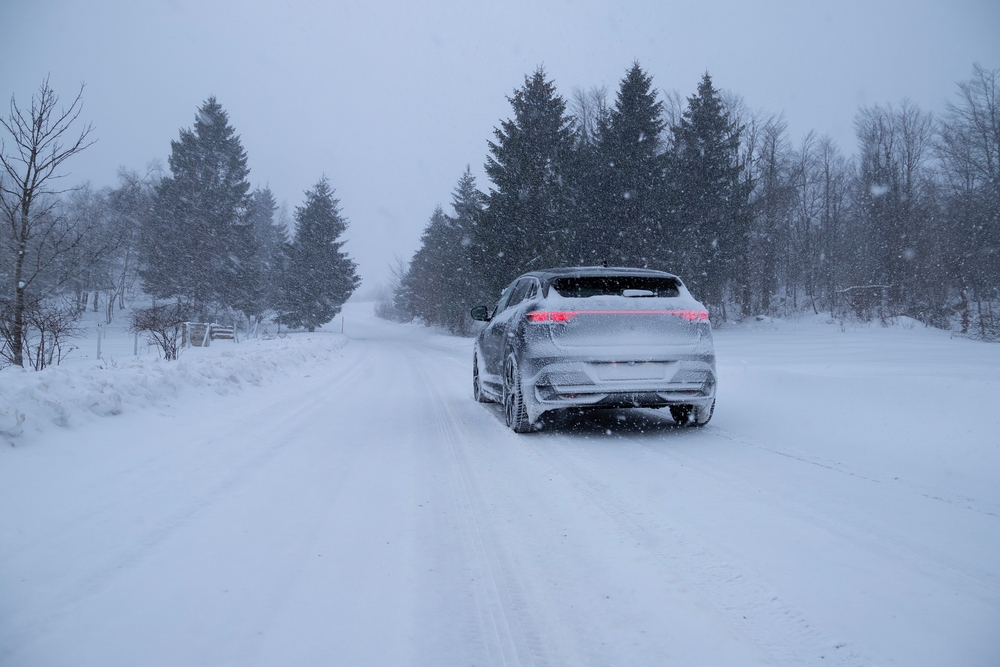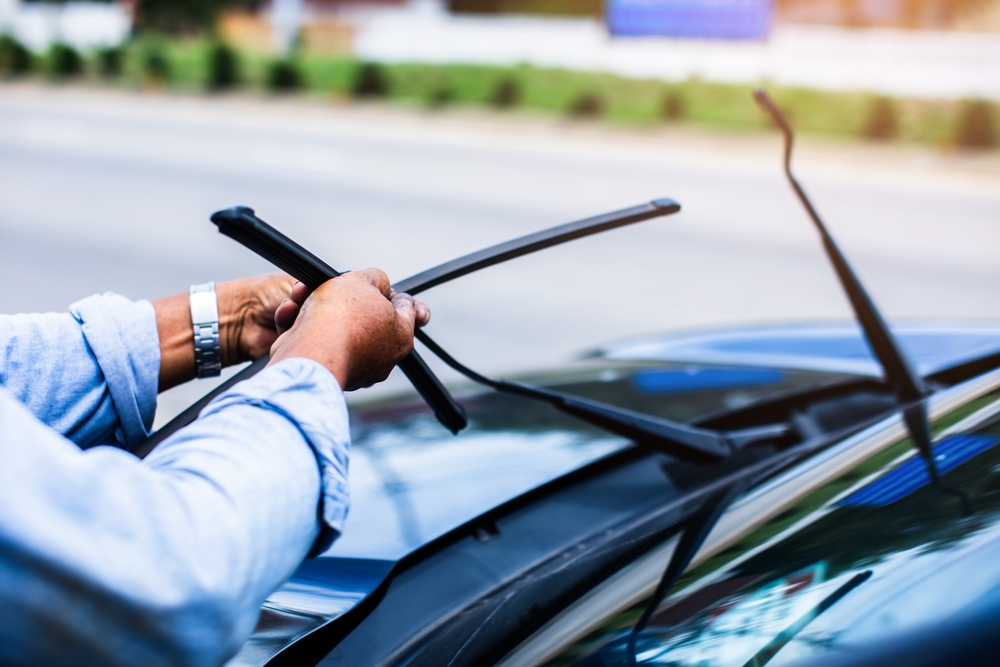
Winter weather can be harsh on your vehicle, and preparing your car for cold weather is essential to keep it running smoothly. From frozen windshields to icy roads, winter driving conditions demand extra precautions to ensure safety and avoid breakdowns. In this guide, we’ll walk you through essential steps to winterize your car and stay prepared for the colder months ahead.
1. Check and Change Your Fluids
Fluids are vital to your car’s functionality, especially in colder weather, where they tend to thicken and can lose efficiency.
Engine Oil
Using the correct type of engine oil is crucial in winter. Consider switching to a winter-grade oil if you live in a region with extremely low temperatures. These oils have lower viscosity, which allows them to flow more freely in the cold, protecting your engine on chilly mornings.
Coolant
A balanced mixture of coolant and water (usually 50/50) is essential to prevent the engine from freezing. Check your coolant levels and top off as needed. It’s wise to flush your coolant system if it’s been a while, ensuring it’s at peak performance for the winter season.
Windshield Washer Fluid
Swap out regular washer fluid for one specifically designed for freezing temperatures. Winter washer fluid prevents freezing and helps clear away ice and frost, keeping your visibility clear during snowstorms.
2. Inspect Your Battery
Cold temperatures can severely affect your car battery, reducing its power output and making it harder to start your vehicle. Here’s how to ensure your battery is up to the challenge:
- Check the voltage: Ideally, your battery should have a charge of 12.4 volts or higher. Many auto shops offer free battery testing services.
- Clean the terminals: Corrosion around the battery terminals can prevent a proper charge. If you see any buildup, clean it off with a mixture of baking soda and water.
- Consider a battery blanket: If you live in an area that experiences extreme cold, a battery blanket can help keep your battery warm, making it easier to start the car in frigid temperatures.
3. Examine Your Tires
Proper tire care is essential in winter. With icy roads and potential snowfall, having adequate traction is critical for safety.
Tire Tread
Check the tread on your tires, as worn tires provide less traction. The general rule is to have at least 2/32 of an inch tread depth, but in winter, it’s better to aim for 4/32 of an inch or more. You can use a tread depth gauge or the penny test: place a penny into the tread with Lincoln’s head facing down. If you can see the top of his head, it’s time for new tires.
Winter Tires
If you frequently drive in snowy or icy conditions, consider switching to winter tires. These tires are designed to grip the road better in cold weather, giving you more control and confidence on slippery roads.
Tire Pressure
Cold temperatures cause tire pressure to drop. For every 10-degree Fahrenheit drop in temperature, your tires can lose one pound per square inch (PSI). Check your tire pressure regularly and keep it at the recommended level for optimal performance.

4. Replace Worn Windshield Wipers
Visibility is crucial when driving in winter, and old or damaged wiper blades can compromise your safety. Consider replacing your wipers with winter-grade blades, which are designed to handle ice and snow. Additionally, make sure your wiper fluid is filled with a winter formula to avoid freezing on your windshield.
5. Keep an Emergency Kit in Your Car
Winter weather can be unpredictable, and having an emergency kit in your vehicle can be a lifesaver if you get stranded. Here’s what to include:
- Blankets and warm clothing: Keeping warm is essential if you’re stuck for an extended period.
- Flashlight and extra batteries: Visibility can drop quickly in winter storms, so it’s always wise to have a flashlight on hand.
- Ice scraper and snow brush: These tools are essential for clearing snow and ice from your car.
- Jumper cables: Cold weather can drain your battery, and having jumper cables can save you from being stranded.
- Non-perishable snacks and bottled water: In case you’re stuck for an extended period, staying nourished and hydrated is important.
- First aid kit: Always have a basic first aid kit with bandages, antiseptics, and other emergency supplies.
6. Check Your Lights
During winter, days are shorter, and you’ll likely be driving in the dark more frequently. Ensure all your lights—headlights, taillights, brake lights, and fog lights—are functioning correctly. Clean any dirt or snow off your lights to improve visibility, as grime can dim their effectiveness.
Upgrade to LED or Halogen Bulbs
If your vehicle’s lights aren’t bright enough, consider upgrading to LED or halogen bulbs. These provide better illumination in foggy or snowy conditions, enhancing your safety on the road.
7. Prepare Your Car’s Heating System
A properly functioning heating system is vital for comfort and safety. Test your car’s heater to ensure it’s blowing warm air effectively. Additionally, check the defrost setting to make sure it clears the windshield properly, which is essential for maintaining visibility in snowy or frosty conditions.
Cabin Air Filter
Your car’s cabin air filter should also be checked before winter. A clogged filter can reduce airflow and impair your heating system. Replacing it if it’s dirty can help your car warm up more efficiently.

8. Protect Your Car’s Exterior
Winter weather can wreak havoc on your car’s paint and metal components. Salt used on roads to melt snow and ice is especially corrosive, so take steps to protect your vehicle’s exterior.
Wash and Wax Your Car
Give your car a good wash and apply a coat of wax before winter arrives. Wax acts as a barrier, helping to protect your paint from salt and road grime. Regular washing throughout winter is also recommended to prevent salt buildup.
Consider a Car Cover
If you don’t have a garage, a car cover can provide an extra layer of protection against snow and ice. Just make sure it’s designed for winter weather to avoid scratching your paint.
9. Use Fuel Additives for Winter
In colder temperatures, fuel can gel, especially if you drive a diesel vehicle. To prevent this, consider using a fuel additive designed for winter. These additives keep fuel from gelling and help maintain performance.
Keep Your Gas Tank Full
Maintaining a full tank of gas is a good idea in winter. Not only does it help keep your fuel lines from freezing, but it can also be a lifesaver if you get stranded and need to keep the car running for warmth.
10. Inspect Belts and Hoses
Cold weather can cause belts and hoses to become brittle and break. Inspect your engine’s belts and hoses for any signs of wear, cracking, or fraying. Replace any parts that appear damaged, as a broken belt or hose in winter weather could leave you stranded.
11. Test Your Brakes
Brakes are one of the most crucial components of your car, especially in icy or snowy conditions. If your brakes are making unusual noises or if you feel any vibration while braking, have them inspected by a professional. Worn brake pads or rotors can make winter driving more hazardous.
12. Consider Adding Traction Mats
If you’re driving in areas prone to heavy snow, traction mats can be a handy addition to your car. These mats can help you get unstuck if your car gets caught in snow or ice. Simply place them under your tires to gain traction and help get your car moving again.
13. Plan for Winter Storage if Needed
If you plan on storing your car during the winter, there are a few steps to ensure it’s protected while not in use.
Fill the Gas Tank and Add a Stabilizer
A full gas tank prevents moisture from accumulating, which can lead to rust. Adding a fuel stabilizer helps prevent the gas from breaking down and keeps your fuel system in good condition.
Disconnect the Battery
To prevent your battery from draining, consider disconnecting it if you won’t be using your car for an extended period. Store the battery in a cool, dry place.
14. Lubricate Locks and Weather Stripping
Freezing temperatures can cause car locks and weather stripping to freeze, making it challenging to enter or exit your vehicle. This can be especially frustrating during early morning starts when you’re in a hurry.
Use Lock Lubricants
Applying a lock lubricant, such as graphite powder or a silicone-based spray, can prevent your locks from freezing. If your locks do freeze, avoid forcing the key or using hot water, as this can damage the lock. Instead, use a de-icing product to quickly unfreeze it without causing harm.
Condition Weather Stripping
Rubber weather stripping around your car doors can become brittle and stick in the cold. Applying a silicone-based lubricant or rubber conditioner to these areas helps keep them pliable and prevents them from freezing shut. This small maintenance task can make a big difference when winter temperatures drop.
15. Consider Installing a Remote Start System
A remote start system can be a worthwhile investment, particularly if you live in an area with harsh winters. This convenient feature allows you to start your car from the comfort of your home, giving it a chance to warm up before you get inside. Warming up the engine in advance also helps the oil circulate, reducing strain on your engine and improving overall performance.
Many remote start systems also include settings to activate the car’s defrost feature, so your windows will be clear when you’re ready to hit the road. While some cars come with remote start built-in, you can have it installed on almost any vehicle, often for a reasonable cost.

16. Make Use of Car Mats to Protect Your Interior
Winter can be messy, especially when it comes to the slush, mud, and salt that gets tracked into your car. Protecting your car’s interior during winter is just as important as maintaining its exterior.
Use All-Weather Floor Mats
All-weather floor mats are designed to catch moisture, dirt, and salt, keeping your car’s carpet clean and dry. These mats are easy to remove and clean, making them a convenient way to preserve your car’s interior through the winter. Look for mats with deep grooves or ridges to trap water effectively.
Clean Mats Regularly
During winter, it’s a good idea to shake out your car mats regularly to remove built-up debris. Salt, in particular, can damage your interior if left unchecked, so wiping down surfaces and washing the mats will help prolong their life and keep your car looking great.
17. Be Mindful of Fuel Economy in Winter
Cold weather can reduce your car’s fuel efficiency due to increased friction from cold engine fluids, tire pressure drops, and the extra energy required to warm up the engine and interior. While it may seem minor, paying attention to your fuel economy can help you adjust your driving habits to make the most of your fuel during the colder months.
Warm Up with Caution
Avoid idling your car for extended periods, as this can waste fuel. Instead, drive gently for the first few minutes to allow your engine to warm up efficiently. This approach is not only better for fuel economy but also for the environment.
Plan Your Trips
Consider combining trips to reduce unnecessary starts and stops, which consume more fuel in cold weather. When possible, plan your errands to make fewer, longer trips, which is generally more fuel-efficient than several short ones.
Preparing Your Vehicle for Winter
Preparing your car for winter is essential for maintaining safety and reliability in cold weather. From checking your fluids and battery to investing in winter tires and keeping an emergency kit, these steps will help ensure your car is ready for whatever winter throws your way. With a little preparation, you can stay safe on the road and avoid many of the common issues that come with winter driving. Take these precautions now to enjoy a smoother, worry-free winter season.


